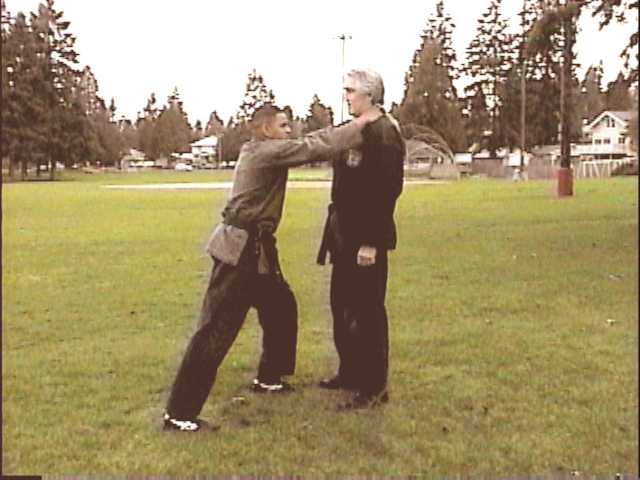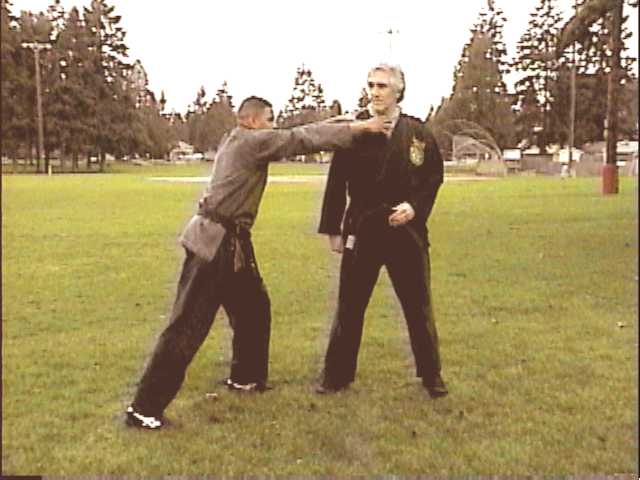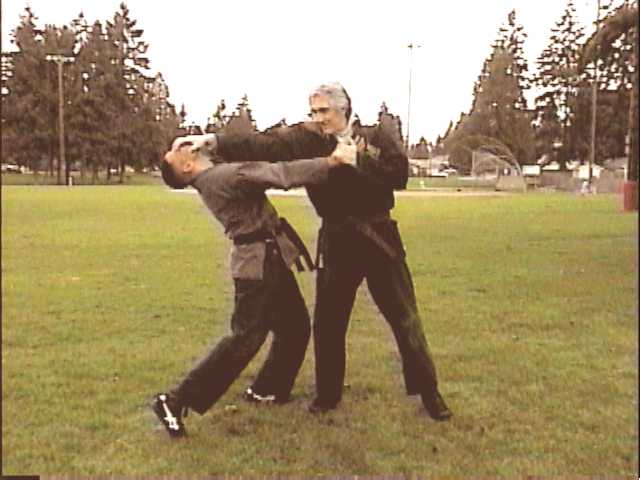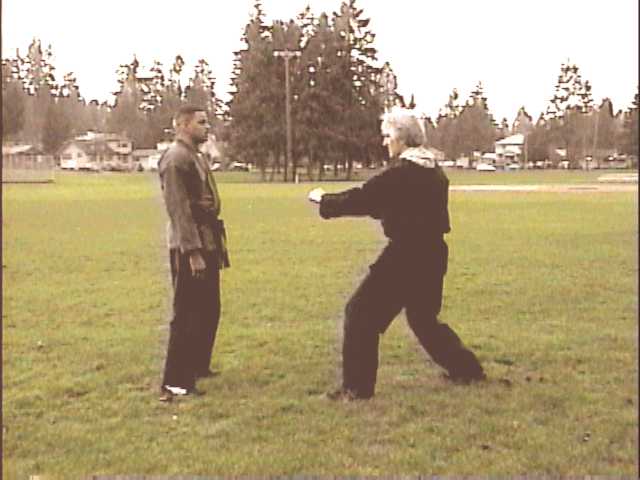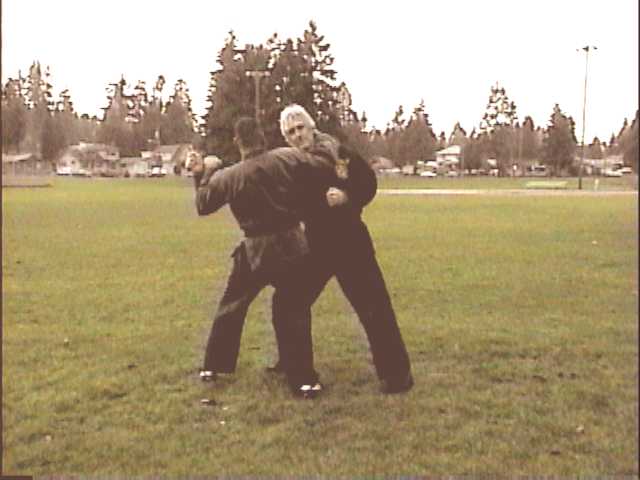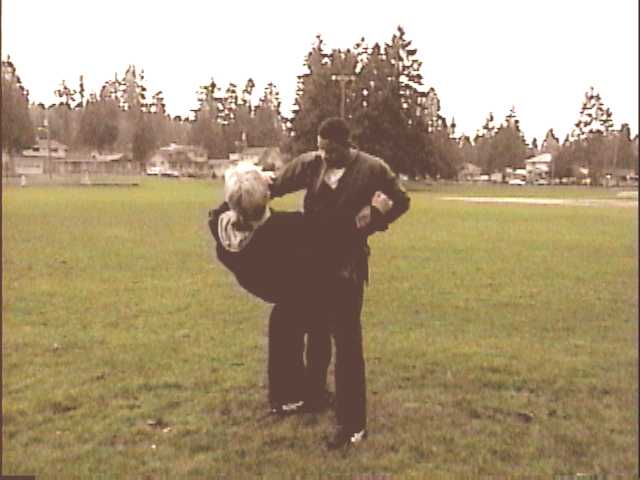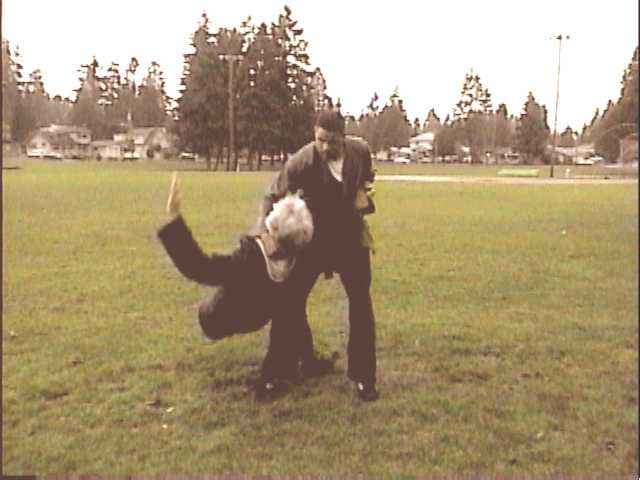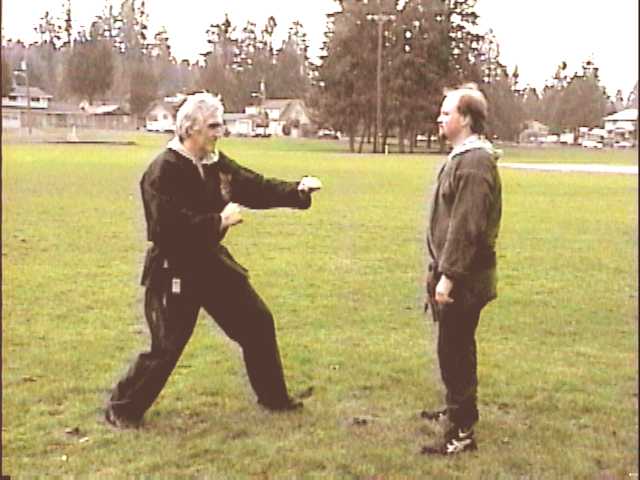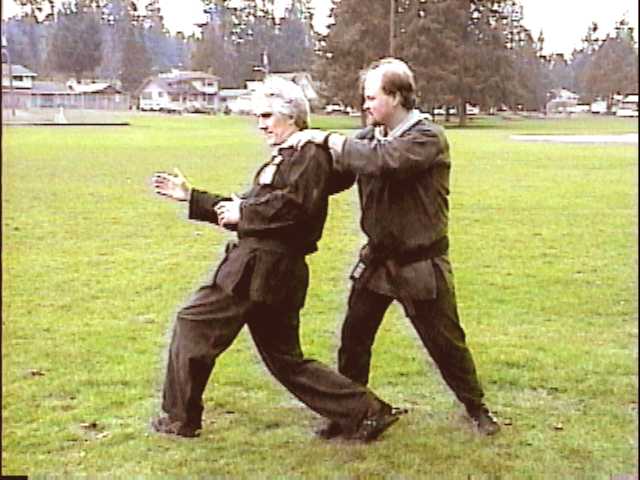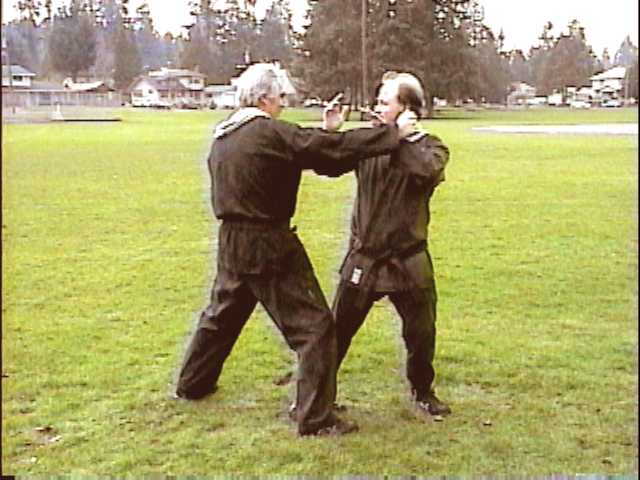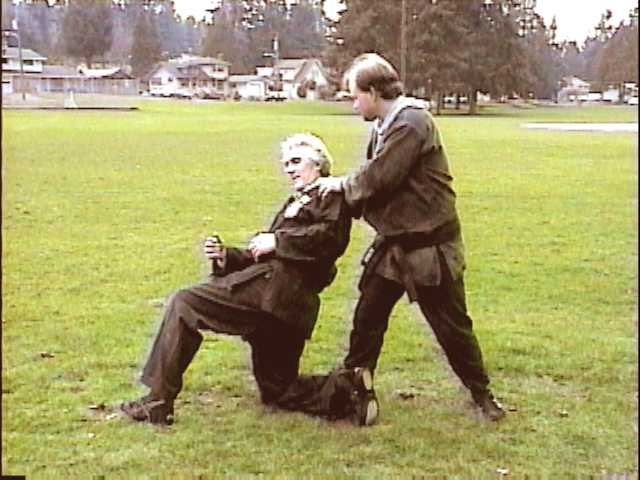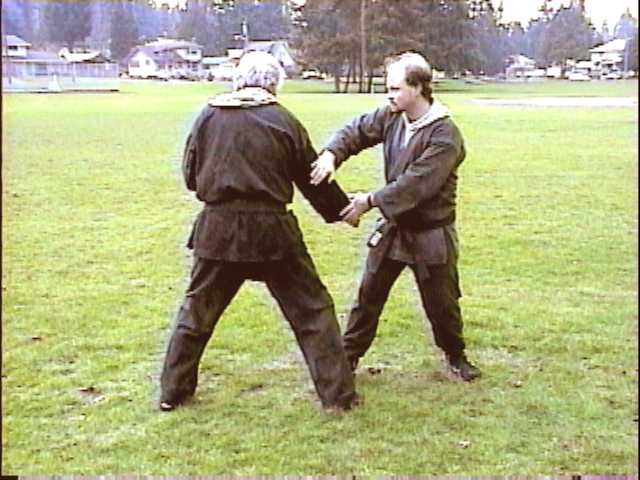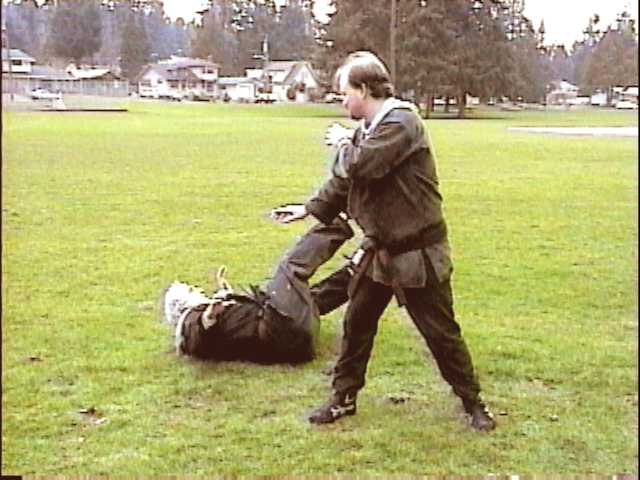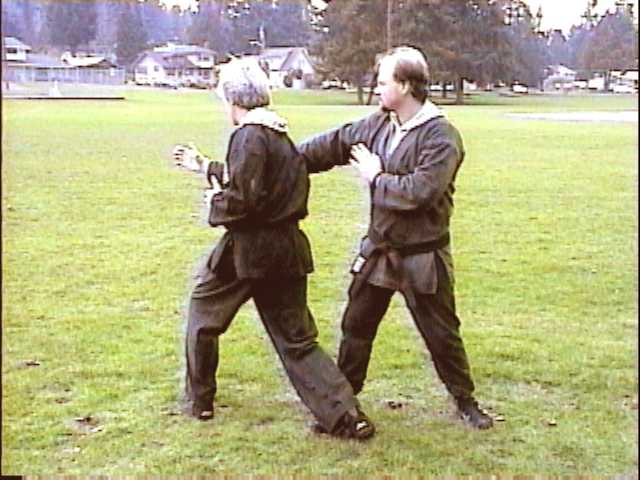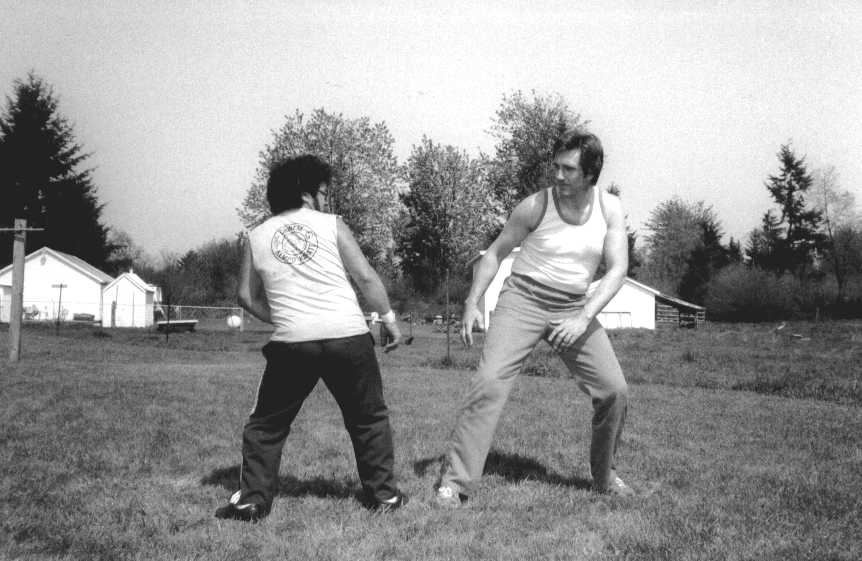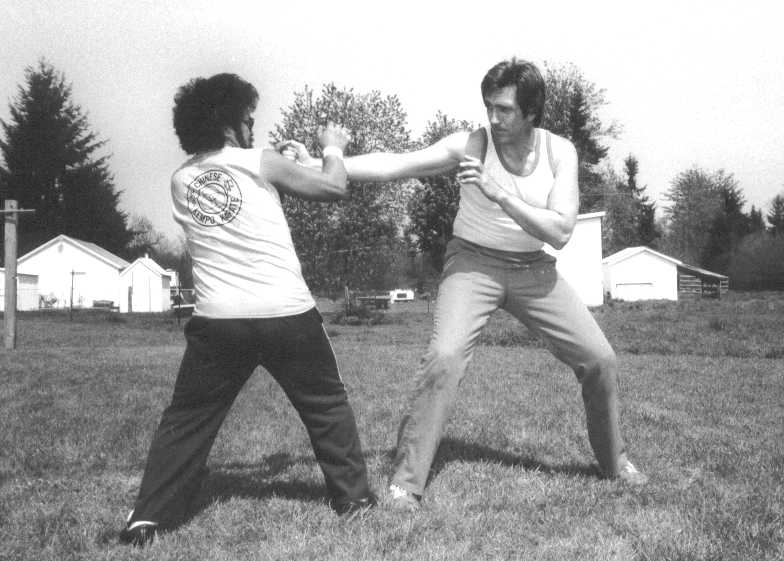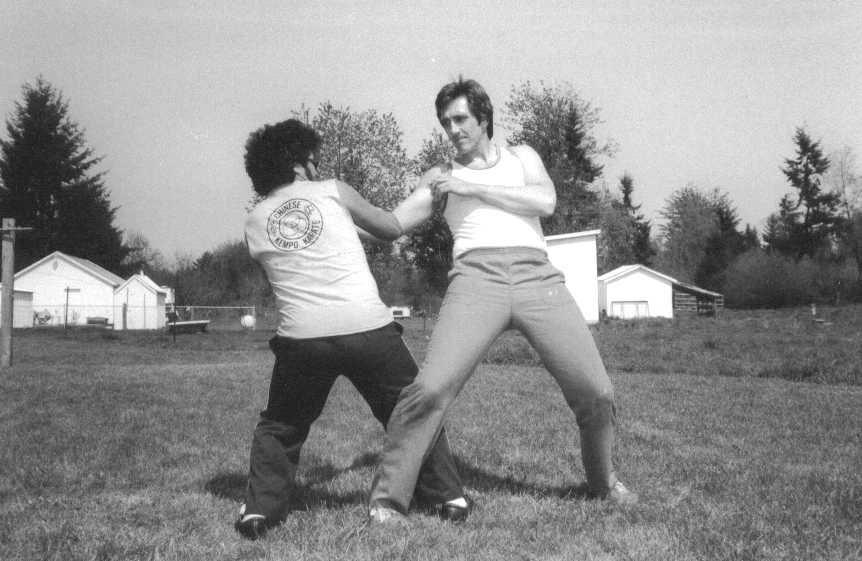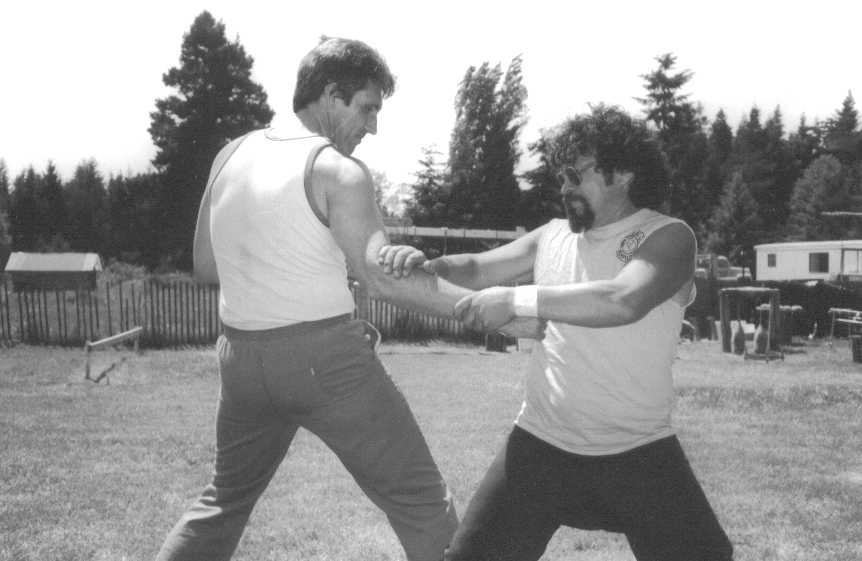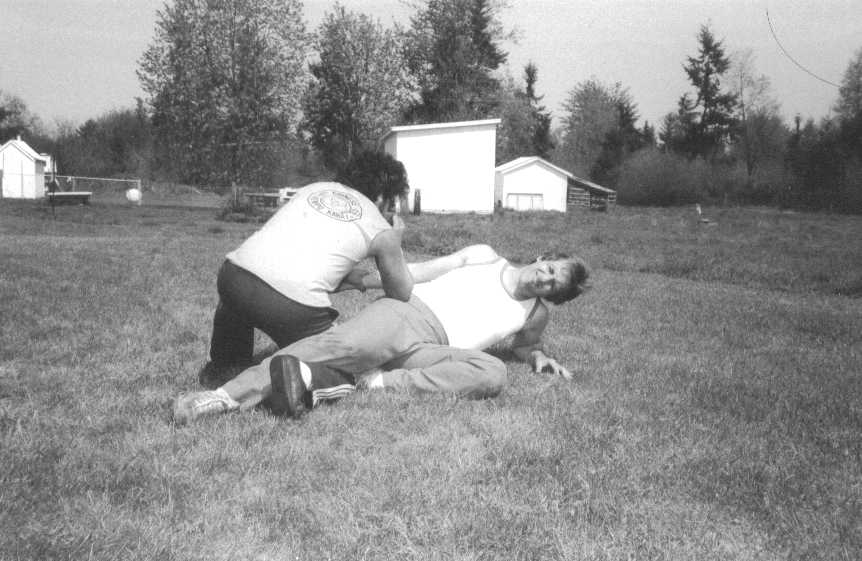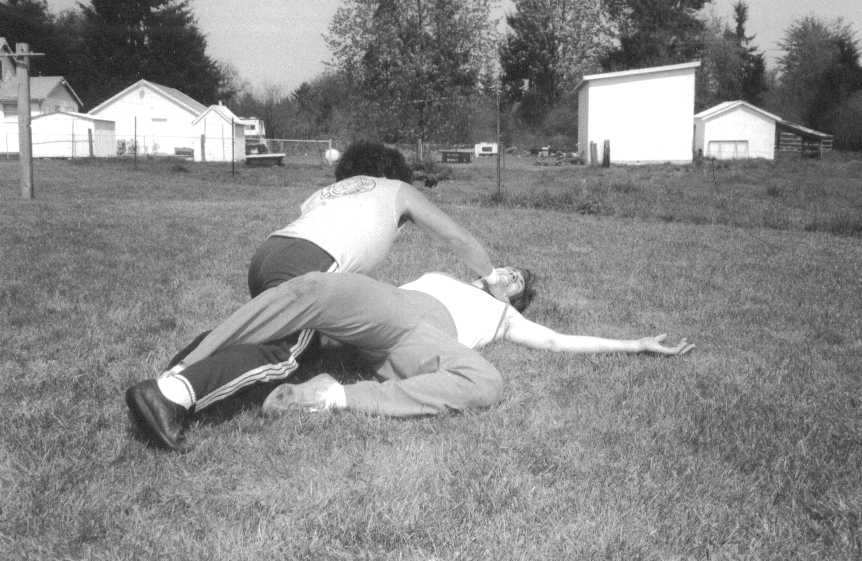
|
THE SECRET OF HAP KI DO Peel an onion sometime. Strip the skin, pull off the first layer and there's another like it below. Pull off the second, you find a third ... strip the third and there's a fourth ... all the way to the core.
The ancients taught us that form rules substance. Within everything, there is a quintessential essence, a guiding spirit, a "form" which gives it its true and unmistakable identity. It's in the onion, even though we can't see it. It's in the martial art, even though we may have yet to discover it. Whatever your style, martial arts are the transformation of concept into reality. Fundamental to growth in the martial arts is adherence to a strict philosophical course which ultimately leads to indomitable spirit, impeccable attitude and ability to convert your knowledge into action.
The Circular Principle In Hap Ki Do, the student learns that power travels in circular arcs. Learning how to package power in circles, and to use circular movement to your advantage adds a new dimension to your self defense strategies. Have you ever played "Battle of the Titans" with a sparring partner? That's when both of you have such similar fighting habits that you begin to feel like you're standing in front of a mirror. When you throw a kick, your opponent throws a kick, feet sometimes colliding in mid-air. As the fight unfolds, bodies bang, legs crunch and noses bleed. Bowing out, you wonder whatever possessed you to do martial arts in the first place. Mastering the circular
principle means goodbye "Battle of the Titans". When
your opponent attacks, you instantly glide to where his
attack will not connect and from where you can safely
counter.
The Water Principle The blades sparked in the moonlight as the attacker lunged forward to deliver the fatal stroke. The defender's dark figure appeared to embrace the incoming silhouette. Suddenly, the cold sound of metal dancing on concrete. The defender and the attacker appear to be moving not as adversaries but as one person, except that the defender's control is absolute. In seconds, the attacker is on the ground, completely subdued. This is the water principle. And whether you know it as the water principle or not, it symbolizes the highest level of martial arts development. Just as water can shape mountains and carve canyons, the first step in understanding the water principle embodies the apparent contradiction that even while enacting the most effective defense, we merge with our opponent, embracing his directed energy, and in the embrace, cause his energy to dissipate. When he thrusts, we recede; when he retreats, we fill the void. That is the water principle. Though we are initially apart from our opponent, by applying the water principle, our movement becomes one with his. We, together, become as one. In the end, there is only one movement. Mastering the water principle means always having the next move at hand. Water flowing downhill comes upon innumerable obstructions, yet always enacts the perfect response. No matter how the opponent attacks, we are confident and at home knowing that without even thinking about it, we will produce the right move to neutralize our opponent's intent.
The Secret of Hap Ki Do The principle of non-resistance, the circular principle and the water principle characterize the essence or soul of Hap Ki Do. The student who has mastered the art of Hap Ki Do is guided by the three principles at all times, whether at the gym, at the office or idling in traffic. These same three principles make the student a better martial artist and a better human being. As with the magician's apprentice, the Hap Ki Do student may also expect the day when the master will ask, "What is the secret of Hap Ki Do?" The response can only be, "Sir, I am the secret of Hap Ki Do." And looking at your progress over the years, the master grudgingly approves, knowing that student and art have again become one.
|
|||||||||||||||||||||||||||||||||||||||||||||||||
[Home] [About Us
] [Archie] [Concepts] [Contact Us]
[Gun
Fu Manual] [Kata]
[Philosophy] [Sticks] [Stories] [Web
Store] [Terms of Use]
[Video]
Copyright 2000-2025, Mc Cabe and Associates, Tacoma, WA. All rights reserved. No part of this site can be used, published, copied or sold for any purpose, except as per Terms of Use .
